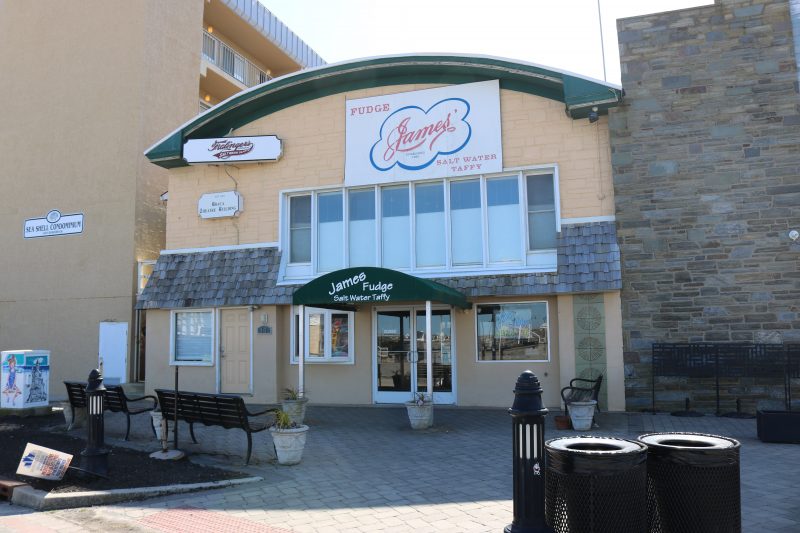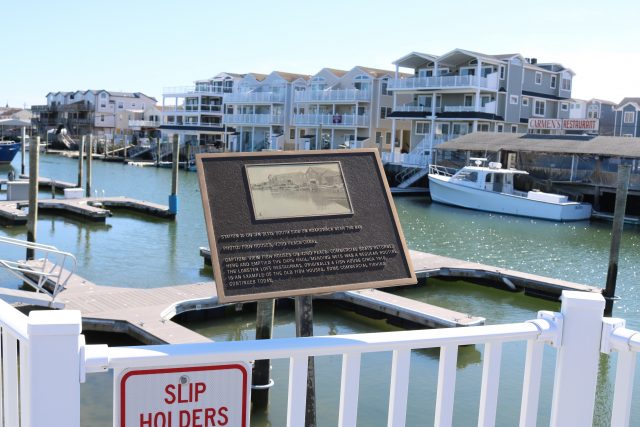
By DONALD WITTKOWSKI
It was a time when horse-drawn carriages would carry Sea Isle City’s visitors into town across the drawbridge on Minerva Street.
For tourists wanting a bit faster and more modern way of travel, they could arrive by train on one of several railroads serving Sea Isle from Philadelphia.
Once they were downtown, they could hop aboard motorized trolley cars for trips along Landis Avenue to the Continental Hotel, Cupid’s Garden or all the way to Strathmere.
Other popular attractions were Braca’s movie theater, where silent movies were shown, the Excursion House, an epicenter of entertainment in town, and the Women’s Civic Club, Sea Isle’s oldest organization.
These snippets of Sea Isle’s rich history from the late 1800s and early 1900s are revealed during a self-guided tour down John F. Kennedy Boulevard between the beach and bay.
The half-mile walk is highlighted by seven historical plaques that give a brief, but intriguing glimpse of the Sea Isle City of old.
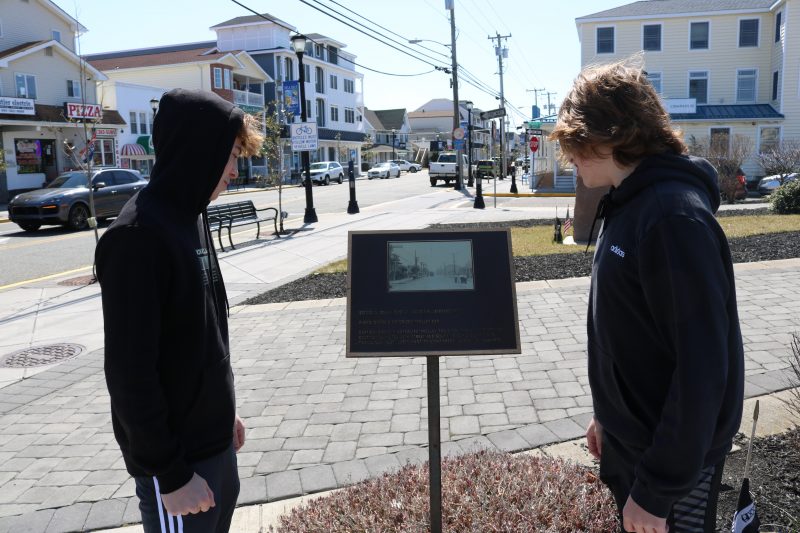
The plaques were installed about 10 years ago, but Sea Isle officials are thinking about adding new ones to chronicle other parts of the city’s history.
“We would definitely like to have more plaques,” city spokeswoman Katherine Custer said in an interview Monday. “There are many more historic facts that we could highlight that would go beyond the walking tour. Sea Isle has some very interesting history.”
The original plaques were part of Sea Isle’s multimillion-dollar “Beach to Bay Project,” a sweeping overhaul of the main corridor into town that created a more inviting entryway and new amenities for residents and visitors.
Completed in 2013, a series of road, landscaping, safety and municipal projects were added to the JFK Boulevard gateway, stretching from the city’s marina to the beachfront Promenade over a five-year span.
Although the Beach to Bay Project created new attractions, city officials didn’t want it to completely overshadow Sea Isle’s past, so a decision was made to install metal plaques to recapture Sea Isle’s history.
“We wanted to promote the historical elements of the city,” said Mike McHale, a former Sea Isle mayor who was serving as a city councilman when the plaques were installed.
McHale is also a former president of the Sea Isle City Historical Society and Museum, where he currently serves as a trustee. The Historical Society promotes the self-guided tour in a brochure.
“We welcome you to stroll the updated corridor, taking in much of the nostalgia from the past with a blend of the exciting features of the present,” the brochure says.
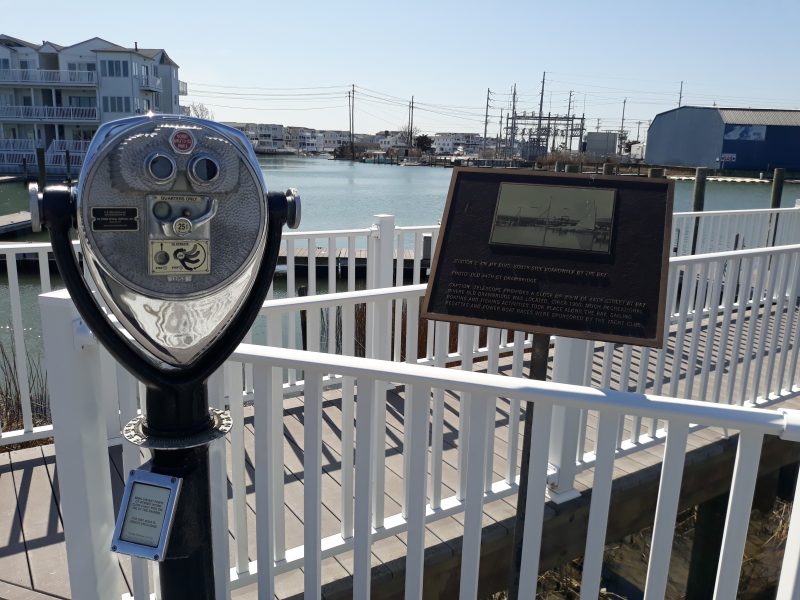
To start the tour, the first plaque can be found at the bay end of 42nd Place, on the boardwalk near the public boat launch underneath the Sea Isle Boulevard bridge.
It describes the old drawbridge at Minerva Street (now known as 44th Street) and the horse-drawn buggies – and later, the automobiles – that would use it to enter Sea Isle before the JFK Boulevard entryway and modern bridge were built in 1963.
Not far from the first plaque is another one on 42nd Place overlooking the city’s municipal marina. It tells of the old fish houses that lined the canal and were a key part of the city’s commercial fishing industry in the historic Fish Alley neighborhood.
The third plaque stands at the corner of JFK Boulevard and Park Road, directly across from City Hall. The plaque notes that the same area was one of the landing and takeoff zones for rescue helicopters that evacuated local residents during the monstrous March 1962 storm that devastated the city.
Heading down JFK toward the ocean, the fourth plaque can be found on the sidewalk at Central Avenue. Across the street from the plaque, where the post office now stands, was the location of Sea Isle’s former train station. Train service to Sea Isle started in 1882, the year the town was founded, the plaque points out.
“Several railroad lines including West Jersey Railroad provided service. Trains continued onto Ocean City (north) and Stone Harbor (south),” it says.
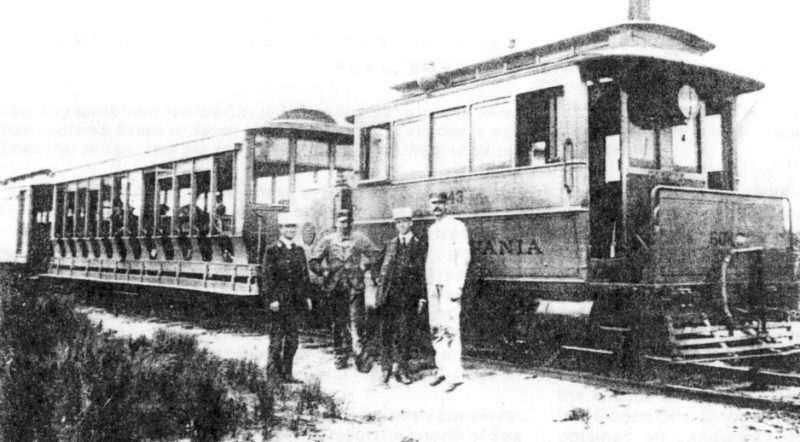
The fifth plaque, standing at the corner of JFK and Landis Avenue, tells of the Brook’s motorized trolley cars that took riders to popular stops such as the Continental Hotel and Cupid’s Garden from 1904 to 1918.
Walkers taking the tour will find the sixth plaque on the sidewalk at the corner of JFK and Pleasure Avenue, in front of Braca’s Café. It describes the Braca family’s café, movie theater and newsstand that have been part of the family business for more than 100 years.
To the left of the plaque is the old Braca movie theater building, now the home of the James’ fudge and salt water taffy store.
Finally, the tour wraps up on the Promenade, at the beach end of JFK Boulevard. The final stop includes the seventh plaque, which notes that this was the location where Sea Isle’s Excursion House and Women’s Civic Club, two hubs of the town, once stood on the old Boardwalk.
In a grim postscript, the plaque adds that both the Excursion House and Women’s Civic Club were destroyed during the March 1962 storm. So was the Boardwalk.
Such is history.
